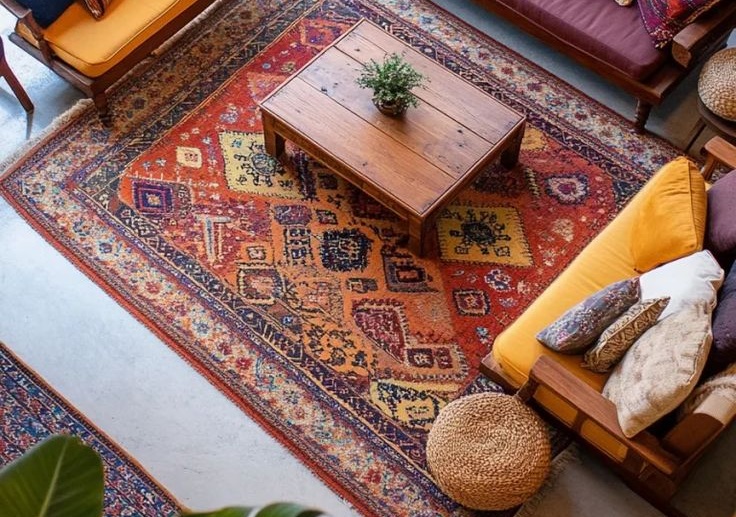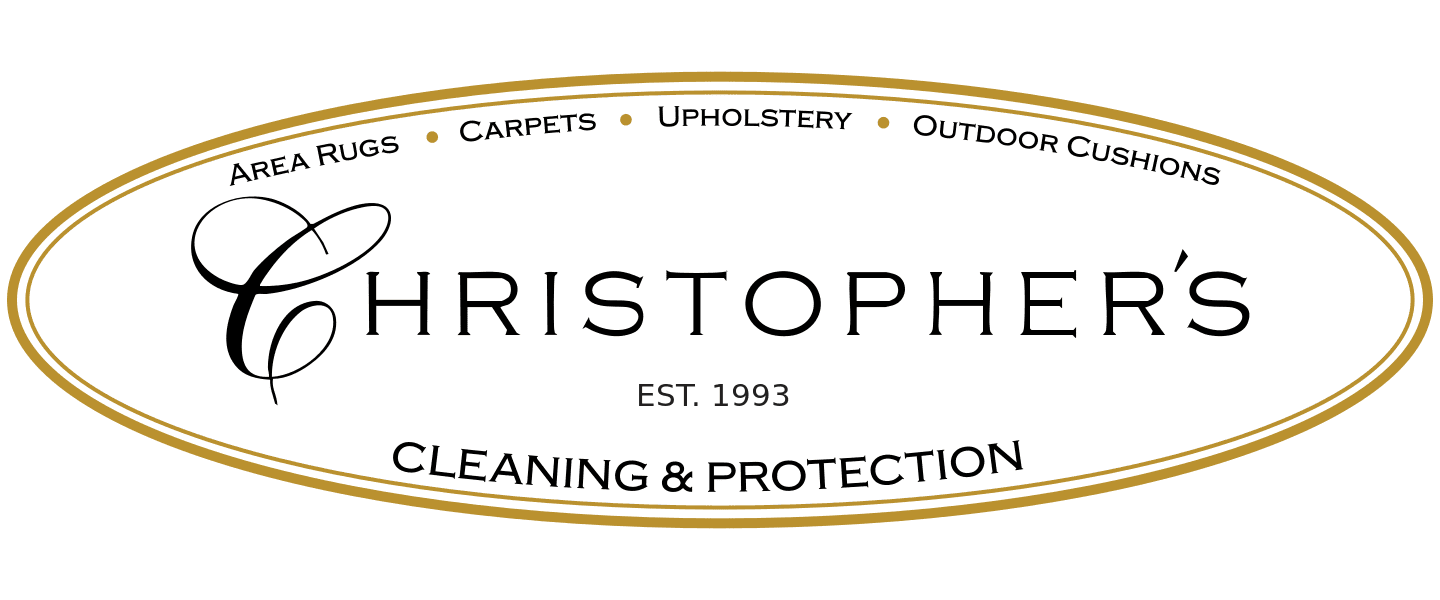Before You Hand Over Your Fine Oriental and Area Rug, Ask These Seven Important Questions
If you plan to hand over a valuable Area or Oriental rug to a cleaner you haven’t worked with before, take a moment to pause. Hand-knotted fibers, natural dyes, and intricate patterns give these rugs their beauty and make them far more delicate than the average living room throw. So if you're feeling hesitant, you have every right to be cautious.
So, how do you protect an heirloom that probably took months to weave and decades to appreciate? Start by treating the first call (or walk-in visit) as an interview, not a drop-off. The answers you receive will tell you everything you need to know about the cleaner’s experience and attention to detail. Let’s go over the seven key questions you need to ask.
Do you have experience cleaning Oriental and Area Persian Rugs made from wool, silk and special blends?
Many cleaners might treat your Persian or Oriental rug the same way they would a regular synthetic rug, and that’s where mistakes happen. These rugs are made from fine wool, silk, and intricate dyes, and they require expertise to prevent damage like shrinkage or color bleeding. Before entrusting your rug to a cleaner, ensure they know exactly how to care for such valuable, delicate pieces.
Some follow-up questions:
1. Have they cleaned rugs like yours before?
Ask if they’ve worked with hand-knotted rugs, antique rugs, or specialty pieces like silk Persians or tribal wool rugs. Their answer should include the type of rug and cleaning method used.
2. Do they mention fiber types and dye sensitivities?
Professionals should talk about wool’s lanolin coating, silk’s fragility, or how vegetable dyes can bleed. If they avoid specifics, be cautious.
3. Do they offer photos or client examples?
Ask to see before-and-after images or reviews specific to Oriental rug cleaning. This helps verify their claims and shows their results.
Will you inspect my rug for damage, stains, or color issues before cleaning?
Every fine rug has its quirks: hidden moth holes, weakened threads, dye instability, or deep-set stains. If a cleaner skips inspection, they’re likely to use a one-size-fits-all method that risks irreversible damage. You want an experienced rug cleaner who will examine your rug closely before recommending a plan.
What a Pre-cleaning Inspection Should Include
- Check for existing damage. They should look for tears, thinning areas, fraying fringes, and signs of moth or pet damage.
- Colorfastness testing. A reputable cleaner tests a small section of the rug to see if the dyes will run during washing — this is especially important for silk or deeply pigmented wool.
- Note stain types and locations. Different stains (urine, wine, dirt) need individual treatments. A clear assessment helps tailor the stain removal method.
How do you handle rugs with water damage or strong odors?
If your rug was exposed to water, either through flooding, spills, or storage in a damp area, you need more than just surface cleaning. Water damage can lead to mold, mildew, and fiber breakdown, especially in wool or silk rugs. Odors, especially from pet accidents, can be tough to remove without proper deodorizing and disinfecting techniques.
The Right Approach to Water Damage and Odor
Ask your cleaner about these specific steps:
- Moisture extraction and drying. Waterlogged rugs must be properly dried to prevent fiber rot. Cleaners should use moisture meters and controlled drying rooms, not just air drying.
- Deodorizing and disinfecting. Make sure they use non-toxic agents safe for Oriental rugs. Enzyme treatments may be used for organic odors like urine or mold.
- Mildew and bacteria removal. Rugs with prolonged exposure to water should be treated for bacterial growth. Look for services that mention antimicrobial cleaning or water damage restoration.
Do you wash rugs by hand or use machines?
Fine rugs require gentle treatment. Machine cleaning or hot water extraction systems designed for wall-to-wall carpets are far too aggressive for Oriental or Persian rugs. The gold standard for delicate rugs is hand washing, done slowly, section by section, using pH-balanced solutions.
Make sure they explain these parts of the process:
1. Manual dusting before washing
Fine rugs should be dusted first to remove deep soil and dirt. Professionals use special tools (like compressed air or rug dusters) to remove dry particulates before any wet cleaning.
2. Hand-submersion or flat-surface washing
Depending on the rug, it may be washed in a shallow pit or on a wash floor using brushes and sponges, not machines.
3. Gentle rinsing and controlled drying
Wool and silk rugs need thorough rinsing to remove residue, followed by flat drying or hanging in a humidity-controlled room to preserve shape and texture.
Can you identify the type of weaving and fiber used in my rug?
Knowing what your rug is made of and how it was made is crucial to deciding how to clean it. A good cleaner should identify whether your rug is hand-knotted, machine-made, flat-woven, or tufted. They should also tell if it’s made from wool, silk, cotton, or synthetic blends. That knowledge informs everything from stain removal to drying technique.
Ask about these key identifiers:
- Fiber content. Wool has a different response to cleaning than silk or synthetics. The cleaner should explain how they test or identify the fiber type.
- Weaving method. Terms like “warp and weft,” “pile,” or “flat weave” should come up. A knowledgeable pro will explain how these affect cleaning risk.
- Dye type and origin. Vegetable, aniline, or synthetic dyes react differently in cleaning. The cleaner should have a plan to test dye fastness and avoid color bleeding.
Do you treat for moths or pests if the rug has been in storage?
Stored rugs, especially in basements or attics, are magnets for moths. Moth larvae can chew through wool fibers, leaving bald patches or holes that are hard to repair. If you suspect your rug’s been exposed or if it’s going into long-term storage, pest treatment is a must.
What a Good Moth Treatment Should Include
1. Visual inspection for larvae and eggs
Cleaners should carefully inspect the back and fringes for signs of infestation like webbing or bare spots.
2. Deep cleaning to remove infestations
Proper rug washing removes larvae, eggs, and organic material that attracts pests.
3. Application of moth repellent
Ask if they use non-toxic repellents or cedar-based treatments to protect the rug after cleaning.
What kind of stain removal and restoration services do you offer?
Every fine rug tells a story, and unfortunately, that story may include spills, pet accidents, or wear and tear. Basic cleaning alone won’t fix deeply embedded stains or restore damaged sections. That’s where professional stain removal and restoration come in. A top-tier rug cleaner should offer both.
Get clarity on these services:
- Custom stain treatments. The cleaner should tailor their methods based on the fiber type and stain origin. For example, acid-based stains need a different solution from protein-based stains.
- Fringe repair, patching, or reweaving. If the rug is torn or frayed, ask about weaving repair or fringe replacement that matches the original design.
- Color correction or dye work. Faded or stained areas may be restorable with precise color-matching techniques. Not every cleaner offers this, so ask up front.
Trust the Experts at Christopher’s for Fine Area Rug & Oriental Cleaning That Restores!

With decades of experience, advanced equipment, and hand-cleaning precision, Christopher’s is the company you can count on when your fine oriental and rugs need expert care. Since 1993, we’ve been the region’s finest carpet and upholstery cleaner, trusted by homeowners and businesses across Virginia, Maryland, and the Washington, D.C. area.
We specialize in restoring delicate textiles like Persian carpets, silk rugs, and heirloom wool pieces using customized, fiber-safe solutions and a level of detail that only comes with years of training.
Our specialists are highly trained professionals who rely on time-tested methods that we have refined for over 30 years. We typically complete the cleaning process in 2-3 weeks (longer for repair work), but we can expedite our process based on your needs and the work to be performed.
📧 Email us: genmgr@mychristophers.com
📞 Call today: 240-693-5857
🕗 Hours: 8:00 AM – 5:00 PM, Monday–Friday
